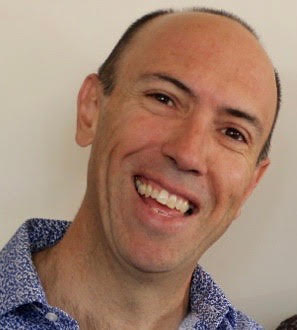Getting the word ‘daft’ published in the BMJ was a highpoint of my career, but signing out of BIM with a lyric from The Sound of Music, may well top it. Yes, we are signing out of BodyinMind.org. After much discussion, some serious number crunching, a couple of negotiations to pass it on gratis, we have decided to stop. At this stage we are going to archive BiM.org and leave it searchable – we have over 950 blog posts and over 25,000 of you still regularly drop in. We won’t be monitoring it, adding to it, servicing it. We will no longer be promoting your meetings, fundraisers, research projects, PhD theses. We will not vanish as a collective of course. We are already busy in some other exciting projects that you can keep a track of via Pain Revolution or Tame The Beast.
So this post, our last, will be long. I really hope you persevere though because I have important things to say. We are sad to finish it up. A few tears have been shed. I suspect the saddest of the crew are Heidi Allen and I. I imagine that BiM.org has most widely been attributed to me, but it has always been as much Heidi’s project as mine. As we grew, others have bought into the vision and its implementation, but Heidi has been a constant.
Heidi and I met in the UK when she was at Elsevier. I was at Oxford. She was looking for authors for textbooks. Somehow, she tolerated my probably obnoxious disinterest in the idea, but through robust conversations about publishing, science, social media, communication, capitalism, we developed a friendship on shared values and to some extent a vision of ‘a better system of knowledge exchange, accountability, intellectual fertility and hope’. She moved to Australia, left her publishing job for very noble reasons and she and I reconnected when I returned home in 2009.
We had independently identified the need ‘out there’ for an understandable, informative, credible and highly reliable source of information for people who wanted to be on top of new developments but did not have the capacity, time or willingness to get to the literature. Through a perfect storm of crisis and opportunity, Heidi and I both took on a task for which we were drastically under qualified. Thanks to Heidi, relief.news emerged and then flourished. For those of you who got involved with our work, you will know that Heidi has given WAY more than she could possibly be compensated for, in time, effort, patience, industry, strategy and reliability. I gladly put meeting and working with Heidi high on my list of Things For Which I Am Grateful.
What a journey we have had! Our first post, in 2009, was followed by another 970. We slowly grew an international reputation for the very things we were trying to deliver – timely, accurate, credible and understandable contributions to the field. We have engaged over 100 authors and given some of them exposure and opportunity they deserved but had not previously had. We have promoted PhD students, PD courses, other web-based resources. We have provided intensive, real world mentoring in science communication. We have spent half a million dollars to do it, from the Australian National Health & Medical Research Council, the University of South Australia, a couple of anonymous donors, but mainly from you folk who have paid to tolerate an evening, day or weekend with me.
For most of the last decade we have sat at the top of the pops when it comes to social and web presence in the clinical pain sciences. We still have an active following in over 100 countries. We have endeavoured to keep BiM.org true to the Body in Mind Research Group Trademarks – Collaboration, Communication, Excellence, Integrity and Innovation. We have biased our author and article selections toward getting quieter voices heard, on training and promoting early career researchers, on given students and peer-reviewed ideas exposure, on pushing the conversation, on keeping scientists accountable to clinicians and clinicians accountable to the science. I reckon we disrupted the field of clinical pain science communication and I really hope you agree.
I want to thank Neil O’Connell, who contributed so much particularly in the earlier days of BiM.org. Neil is an astute spotter of garbage and a very diplomatic communicator of having done so, an outstanding thinker and a Fine Human. He put in a massive amount of time to help make bim.org work and it would not have been half as good without him.
Tasha Stanton and Flavia Di Pietro had very excellent stints as consistent spotters and facilitators of good posts, and were key in spurring BiM.org on through a couple of stutters. In more recent times Carolyn Berryman has stepped up in her typical highly capable, insightful and honest fashion, making significant contributions in working with authors, identifying papers, reviewing and re-reviewing tricky posts. Great work Carolyn – your touch really made it better.
Sarah Wallwork, Tory Madden and Dan Harvie spent many hours working with authors in sometimes very challenging situations. What fine young writers and operators you are – thanks for picking BiM to learn your trade and for so generously giving back from your new spots of expertise and insight – students becoming teachers and all that.
Final reflections from me: I reckon bim.org provided a unique service and I think we did it reasonably well. We have certainly been imitated and we have sometimes been appreciated. We toyed with exploring another funding mechanism based on some sort of cooperative – where our 25,000 strong community ‘owns’ it. This is an ideal I still LOVE the thought of – two bucks a year seems reasonable value to me – but the days of paying for such things as we have provided are clearly over. As many of you know, handing over to a drug or device company is out of the question, although lucrative it seems. We have made some mistakes for sure, but we can honestly say we gave it a good crack.
On signing off, I want to say a hearty and very sincere thanks to the BiM.org community out there. All of you who have sent me, or Heidi, or others, little notes of encouragement along the way. All of you who have shared a moment in which BiM.org has shifted your practice, helped your client, bolstered your armoury in a difficult conversation. All of you who have advocated for BiM.org, or defended it in social media, or on-line, or indeed in person. We have had a few vigorous and outspoken critics over the decade, but we have had many more vigorous and outspoken advocates – thank you very much indeed.
I am move convinced now than ever that accurate, caring, compassionate, considered, considerate, precise, engaging, funny, respectful, reflective and informed communication remains the most powerful thing we can do to improve the lives of those we serve as scientists and health professionals. I urge you all to continue the quest to do it better.
About Lorimer Moseley
 Lorimer is Foundation Chair in Physiotherapy and Professor of Clinical Neurosciences at the University of South Australia, and Senior Principal Research Fellow at Neuroscience Research Australia. He has published over 300 scholarly works. His H-index is 71. He leads the Body in Mind Research Group, which investigates the role of the brain and mind in chronic pain.
Lorimer is Foundation Chair in Physiotherapy and Professor of Clinical Neurosciences at the University of South Australia, and Senior Principal Research Fellow at Neuroscience Research Australia. He has published over 300 scholarly works. His H-index is 71. He leads the Body in Mind Research Group, which investigates the role of the brain and mind in chronic pain.



